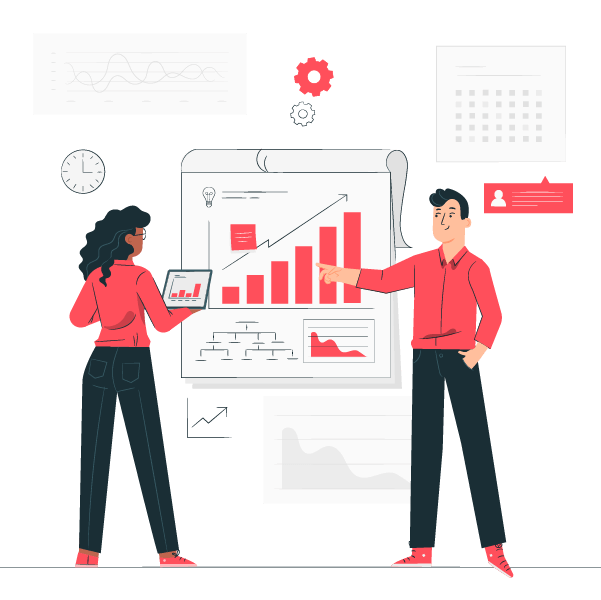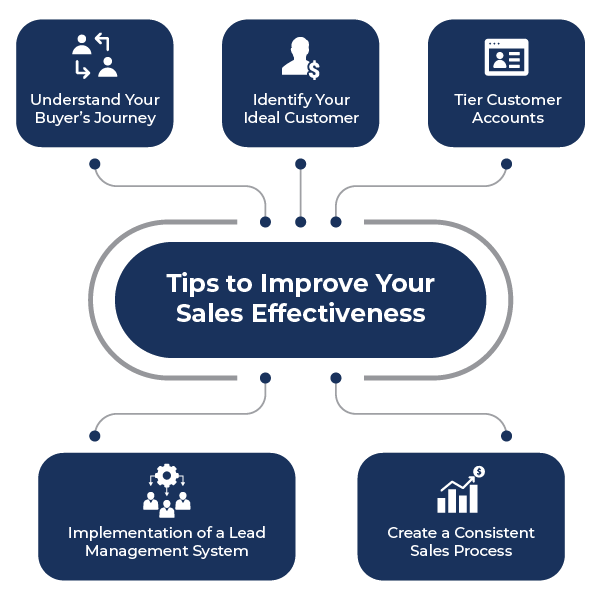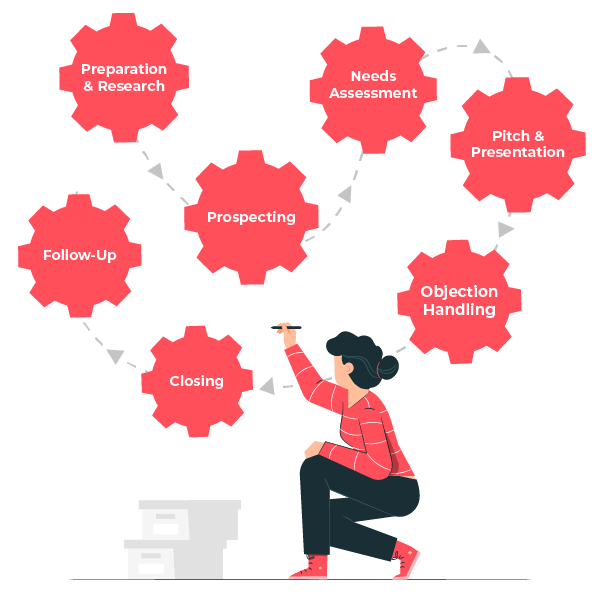You have talked to a lead and had an interactive conversation.
But by the time you follow up the person has already lost interest or grabbed your competition.
To prevent this from happening, what steps should you take?
How can you improve your sales effectiveness?
The sales cycle is the main engine of growth for any company, which is why optimization strategies are required to improve its effectiveness.
That’s how it can help in running your business smoothly.
Strategize Your Sales Process

To strategize your sales process you need to know the strategy used and how you can improve it.
Depending on your organization’s overall strategy and goals, the output can refer to revenue or lead generation, or sales of a specific product.
Selling effectiveness also impacts other goals, such as win rates across the team and customer satisfaction.
Consider the goals of your company and the sales team as a whole.
Even if a seller is producing fantastic numbers, they aren’t being effective if their work isn’t impacting the larger goal.
Improving the sales process highly increases sales effectiveness.
This calls on sales officers to define their sales process by certain criteria, and analyze it critically for shortcomings.
Depending on your organizational goals, potential metrics for sales effectiveness include:
- Target achievement
- Average deal size
- Average on-target earnings
- The average length of the sales cycle
- Sales preparedness
Based on these KPIs, you can get a sense of sales effectiveness on a variety of levels, such as:
- Per product
- Newer reps vs. more experienced reps
- For buyers are different stages
- Individual vs. group average
Tips to Improve Your Sales Effectiveness

Understand Your Buyer’s Journey
The modern-day B2B buyer’s journey is not a linear process.
But many sales processes are still defined as a sequential path.
This misalignment can negatively impact how leaders interpret the overall pipeline and how sellers identify opportunity risks or delays.
Sellers need to adapt to buyers, it won’t be the other way around.
As sales reps adjust the buyer’s journey, pipeline and opportunity management will become more effective.
Identify Your Ideal Customer
Unproductive prospecting can cost more than you can fathom. 50% of sales time is wasted on it.
Creating a profile of your ideal customer will improve your close rate significantly.
That’s because the best way to move a prospect to buy is by addressing every one of their needs and wants.
Building your ideal customer consists of three main components:
- WHO they are (demographics)
- WHERE they are (location)
- WHAT they want (pain points and needs)
Tier Customer Accounts
Tiering customer accounts is a prioritization exercise.
Of course, this also drives up the cost of sales.
While sales leaders promote an account up a tier to improve the coverage and effectiveness, they can also demote an account to improve sales efficiency.
Demoting accounts puts sales growth at risk so sales leaders should only consider demoting accounts that are relatively smaller-sized, lower growth, and requiring less engagement.
Implementation of a Lead Management System
A lead management system ensures that the leads entering the sales funnel are never lost.
It keeps your data safe and you can access all the information according to their lead stage whenever you want.
It’s the all-in-one tool from lead capturing to customer retention.
It also gives you a sales reminder so that you don’t forget to follow-up with your leads.
Create a Consistent Sales Process
If you want your sales team to be efficient, then you must train to outline a repeatable, consistent sales process.
Having a go-to guide for qualifying leads, selling at the right moment, collaborating with the team, and other important sales tasks will only help them work better and faster.
The key steps in the sales process are:

Preparation & Research: Know the scope of your product, what your ideal customer wants and needs, and what your company’s unique selling point is.
Prospecting: This includes the search for potential customers with the goal of moving them down your sales funnel. This is where the ideal customer data comes into play to help you identify promising prospects.
Needs Assessment: This is a way for your sales team to dig deeper into what the prospect needs and what issue(s) they are trying to solve. That way, they can custom-tailor a solution for them.
Pitch & Presentation: This is where your sales rep communicates the unique value of your product to the customer. It’s best that your rep establishes trust and hones in on what benefits your potential customer is looking for. Then they present your product as the ideal solution. Hence, it would be great to have a good visual presentation of your product and story, so try using an AI PowerPoint maker to have creative visuals.
Objection Handling: The customer may have questions or concerns that need to be addressed. This is another opportunity to establish trust and communicate how you are different from your competitors.
Closing: This is when the sale is made or the proposal is sent. Reps should pay attention to the details here so that all the proper paperwork is taken care of.
Follow-Up: Referrals are the highest converting lead source. It’s worth it to follow-up with customers to encourage referrals and repeat business.
Conclusion
Ultimately, the keys to success are around focus, prioritization, and proactive decision making.
Sales efficiency is the #1 priority for businesses that want to close more sales and get the best ROI for their sales investment.
Switch to an integrated platform to sell faster and generate more revenue for your business.







